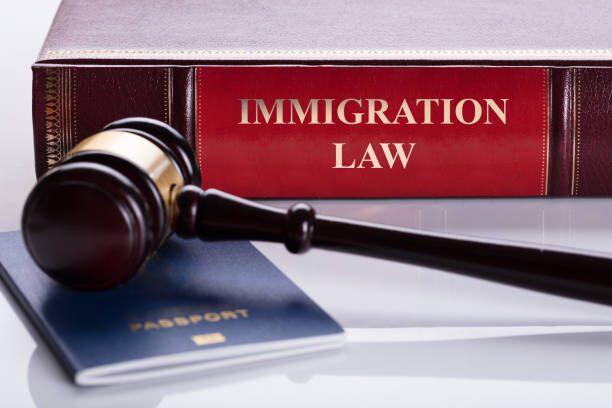The journey to bring your fiancé(e) to the United States can be filled with excitement and questions. For U.S. citizens planning to marry a foreign national, the K-1 visa provides a clear immigration path to do so on U.S. soil. However, navigating this process can be complex and often misunderstood. As an experienced immigration law firm, Sadri Law is here to clarify the procedural steps and eliminate misconceptions surrounding the K-1 fiancé(e) visa process.
What Is the K-1 Visa?
The K-1 visa, commonly referred to as the fiancé(e) visa, allows a U.S. citizen to bring their foreign fiancé(e) to the United States for the purpose of marriage. The marriage must take place within 90 days of the foreign national’s entry. This visa is a nonimmigrant category but leads to immigrant benefits through adjustment of status post-marriage.
Why the K-1 Visa is Ideal for Unmarried Couples
For couples who are not yet married but want to begin their lives together in the U.S., the K-1 visa is an ideal solution. It avoids long waits abroad for a CR1 visa and enables the foreign partner to arrive in the U.S. sooner. It is particularly beneficial when a wedding is planned in the United States with family and friends present.
Step 1 – Eligibility Requirements
U.S. Citizenship Requirement
Only U.S. citizens (not green card holders) can petition for a K-1 visa. You must provide proof of citizenship such as a passport, birth certificate, or naturalization certificate.
Intent to Marry Within 90 Days
Both the petitioner and the beneficiary must intend to marry within 90 days of the fiancé(e)’s arrival in the U.S. A signed statement by both parties is required as part of the application.
Evidence of Meeting in Person in the Last 2 Years
You must have met your fiancé(e) in person at least once in the two years prior to filing Form I-129F. Acceptable evidence includes travel itineraries, photos, and dated correspondence. Exceptions are rare and must be supported by extreme hardship or cultural prohibitions.
Step 2 – File Form I-129F (Petition for Alien Fiancé(e))
Key Documentation to Include
- Proof of U.S. citizenship
- Passport-style photos
- Evidence of the relationship (letters, photos, chats)
- Proof of in-person meeting
- Statements of intent to marry within 90 days
USCIS Processing Time
USCIS typically takes 6 to 9 months to process Form I-129F. Delays can occur, so it’s critical to submit complete and accurate documentation.
Step 3 – National Visa Center (NVC) and Embassy Notification
Case Transfer to the U.S. Embassy
Once the I-129F is approved, the case is transferred to the NVC and then forwarded to the U.S. embassy in the fiancé(e)’s home country. You will receive a case number and next steps.
Scheduling the Interview
The foreign fiancé(e) will be notified by the embassy to schedule the visa interview. It’s important to follow the specific country’s procedures listed on the embassy’s website.
Step 4 – Preparing for the K-1 Visa Interview
Medical Examination Requirements
A medical exam with an embassy-approved physician is required. This exam typically includes a physical, vaccinations, and blood tests. Results are submitted directly or brought to the interview.
Proof of Relationship Documents
Bring originals and copies of evidence that supports your relationship such as:
- Photos together
- Travel records
- Gift receipts
- Emails and messages
- Engagement or wedding plans
Typical Interview Questions and Tips
Sample questions include:
- How did you meet?
- What are your future plans?
- When and where is the wedding? Be honest, prepared, and confident. Consistency between both partners’ responses is essential.
Step 5 – Entering the U.S. on a K-1 Visa
The 90-Day Rule Explained
Once in the U.S., the couple must legally marry within 90 days. If this condition isn’t met, the visa holder must depart the U.S. Failure to marry within this period can lead to removal proceedings.
Getting Married in the U.S.
Plan the wedding carefully to ensure it occurs within the allotted time. Once married, the next step is to file for adjustment of status to remain legally in the U.S.
Step 6 – Adjustment of Status After Marriage
Filing Form I-485 for a Green Card
The foreign spouse must file Form I-485 to adjust status from K-1 to lawful permanent resident. Include supporting documentation such as the marriage certificate, Form I-864 (Affidavit of Support), and financial evidence.
Biometrics Appointment and Interview
USCIS will schedule a biometrics appointment and possibly an interview. Both spouses may be asked to attend. This step is used to verify the authenticity of the marriage and applicant’s eligibility.
Conditional Green Card Information
If the marriage is less than two years old at the time of green card approval, a conditional two-year green card is issued. You must file to remove conditions (Form I-751) before expiration.
Common Challenges and How to Overcome Them
Proving a Genuine Relationship
Immigration officers scrutinize the validity of the relationship to ensure it is not solely for immigration purposes. Submitting robust evidence and consistent testimony is essential. For best results and peace of mind, consider an immigration lawyer consultation to strengthen your case and prepare effectively.
Administrative Processing Delays
Additional background checks or missing documents can trigger delays. Stay responsive and organized to reduce the risk.
Cultural and Legal Hurdles
Differences in customs or legal systems between countries can lead to misunderstandings. Work closely with your attorney to navigate these challenges.
K-1 vs. CR1: Which Is Right for You?
Timeline and Cost Comparison
- K-1 Visa: Faster U.S. entry, but involves multiple steps and fees (I-129F, I-485)
- CR1 Visa: Longer wait abroad, but enters as a green card holder Each option has trade-offs based on the couple’s location and goals.
Immigration Benefits and Drawbacks
K-1 visa allows early reunification, but delays can occur in adjustment processing. CR1 visa simplifies residency but requires marriage first and waiting abroad. Choose based on your timeline, finances, and personal situation.
Conclusion
The K-1 visa process offers a personal and effective path for engaged couples to reunite in the U.S., but it demands careful planning and detailed documentation. From proving a genuine relationship to preparing for interviews and adjusting status post-marriage, each step plays a crucial role. Legal guidance can ease complexities and improve outcomes. At Sadri Law, we help you move forward with clarity and confidence.
Contact Sadri Law today to start your fiancé(e) visa journey.






